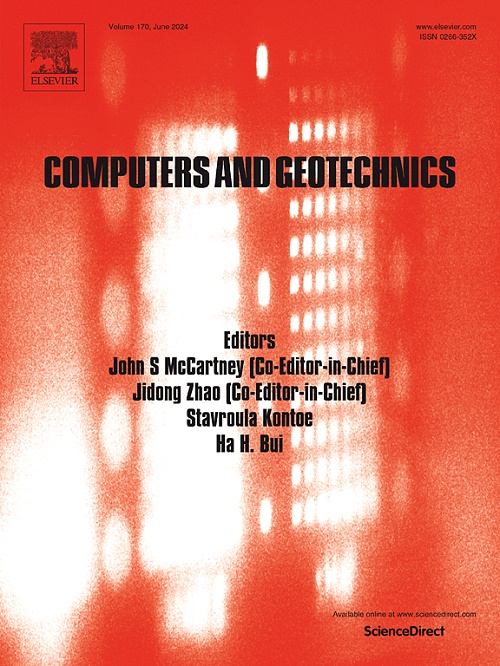A Riemann-based two-phase two-layer SPH method for simulating submarine landslide tsunamis
IF 5.3
1区 工程技术
Q1 COMPUTER SCIENCE, INTERDISCIPLINARY APPLICATIONS
引用次数: 0
Abstract
Capturing dynamic water–soil variations and addressing water/soil boundary in numerical simulations of submarine landslide tsunamis remain major challenges. This study proposes a new two-phase two-layer Riemann-smoothed particle hydrodynamics (SPH) numerical model. In this model, the soil satisfies the Drucker–Prager yield criterion and water is treated as a weakly-compressible fluid. The SPH method based on a low-dissipation Riemann solver, is innovatively introduced into the mathematical framework of water–soil coupling to simulate the dynamic behaviors of two overlapping water and soil particle layers. The no-slip boundary treatment based on a one-sided Riemann format is proposed to achieve the water/soil–solid coupling in landslide simulations. The volume fraction is fully participated in the current SPH discretization process, and the Riemann solver is also applied to improve its calculation. Validations against two static and dynamic water–soil coupling cases demonstrate that present approach is effective. Then, the proposed model with different particle resolutions is further applied to explore the submarine landslide tsunamis under two different configurations. The landslide motions exhibit good agreement and convergence with experimental data, and dynamic water–soil evolutions during the landslide process are properly captured with reasonable dissipation control, which indicates the accuracy and usability of the current Riemann-based two-layer model.
求助全文
约1分钟内获得全文
求助全文
来源期刊

Computers and Geotechnics
地学-地球科学综合
CiteScore
9.10
自引率
15.10%
发文量
438
审稿时长
45 days
期刊介绍:
The use of computers is firmly established in geotechnical engineering and continues to grow rapidly in both engineering practice and academe. The development of advanced numerical techniques and constitutive modeling, in conjunction with rapid developments in computer hardware, enables problems to be tackled that were unthinkable even a few years ago. Computers and Geotechnics provides an up-to-date reference for engineers and researchers engaged in computer aided analysis and research in geotechnical engineering. The journal is intended for an expeditious dissemination of advanced computer applications across a broad range of geotechnical topics. Contributions on advances in numerical algorithms, computer implementation of new constitutive models and probabilistic methods are especially encouraged.
 求助内容:
求助内容: 应助结果提醒方式:
应助结果提醒方式:


